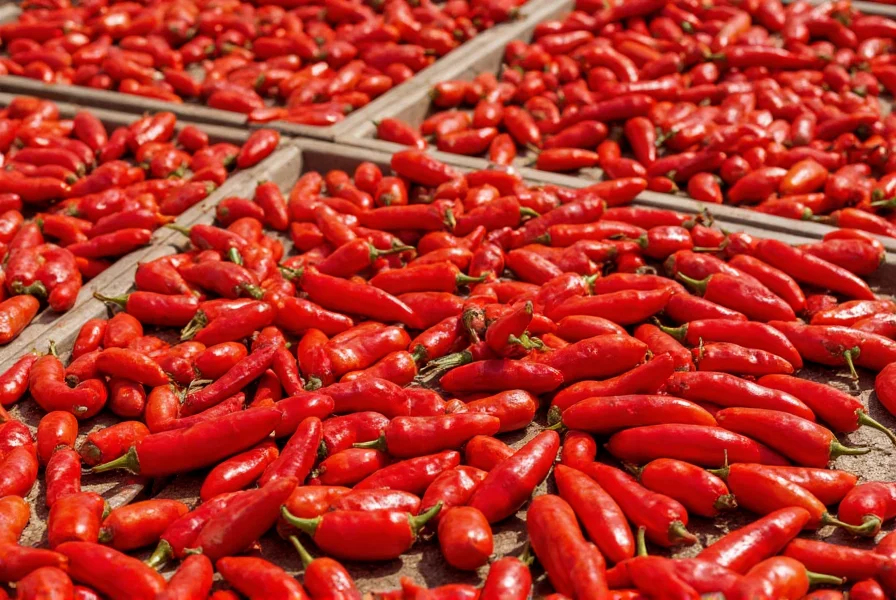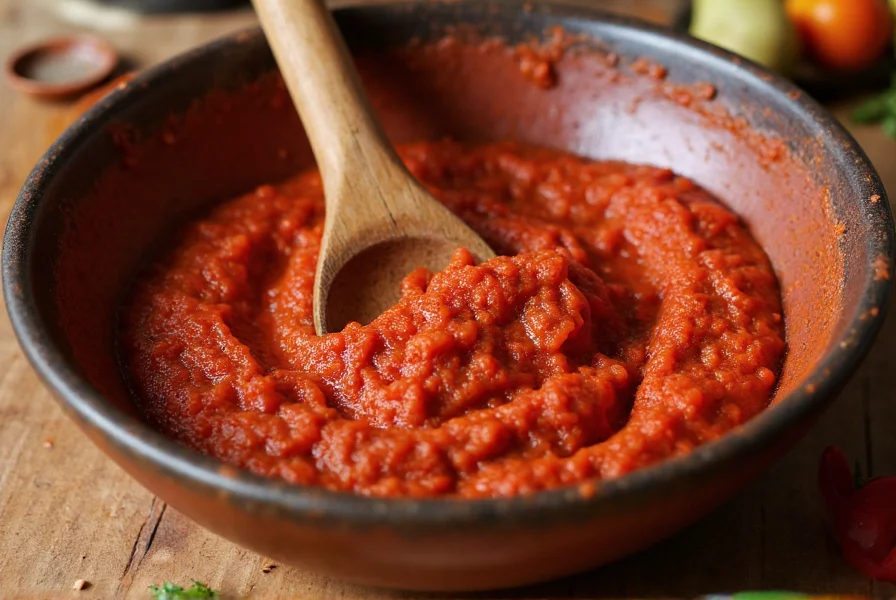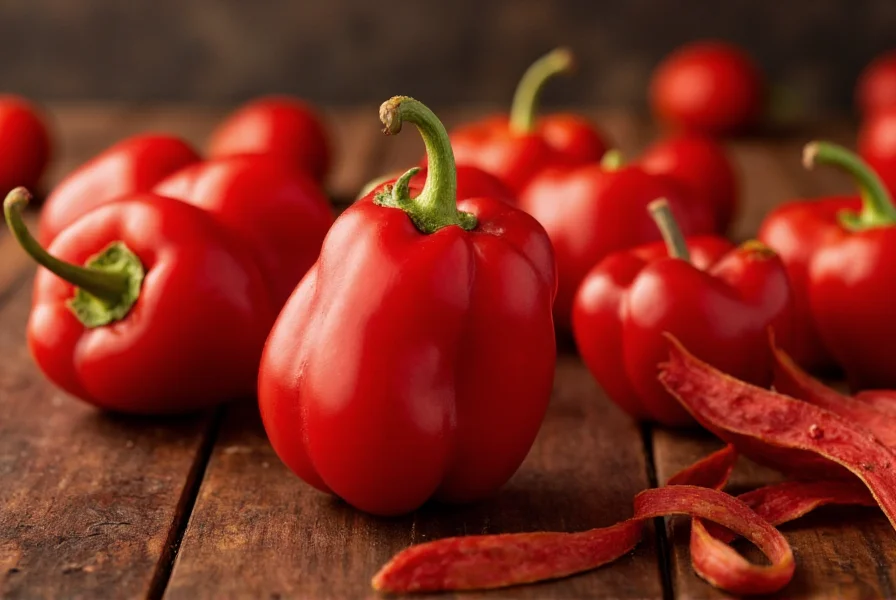When you encounter Calabrian pepper in recipes or at specialty markets, you're experiencing one of Italy's most treasured culinary exports. This small but mighty chili originates from the sun-drenched hills of Calabria in southern Italy, where ideal growing conditions produce peppers with exceptional flavor complexity beyond mere heat.
Understanding Calabrian Pepper's Unique Characteristics
Calabrian peppers (Capsicum annuum) belong to the same family as cayenne but develop distinctive qualities due to Calabria's Mediterranean climate and traditional cultivation methods. Unlike generic red pepper flakes, authentic Calabrian peppers offer a nuanced flavor profile that balances noticeable heat with subtle fruitiness and earthiness.
Grown primarily in the provinces of Cosenza, Crotone, and Reggio Calabria, these peppers typically measure 2-3 inches long with tapered ends. When fully ripe, they transform from green to brilliant red, signaling peak flavor development. The region's volcanic soil and abundant sunshine contribute to their characteristic taste that food enthusiasts describe as "heat with personality."
| Pepper Variety | Scoville Heat Units | Flavor Profile | Common Culinary Uses |
|---|---|---|---|
| Calabrian Pepper | 25,000-35,000 | Fruity, smoky, slightly sweet | Pasta sauces, olive oil infusions, seafood dishes |
| Red Pepper Flakes | 15,000-25,000 | Sharp, one-dimensional heat | General seasoning, pizza, soups |
| Cayenne Pepper | 30,000-50,000 | Bright, straightforward heat | Cajun cuisine, spice blends, hot sauces |
| Chili de Arbol | 15,000-30,000 | Nutty, woody notes | Salsas, marinades, Mexican dishes |
Traditional Processing Methods
Authentic Calabrian peppers undergo specific preparation techniques that enhance their natural qualities. The two most common forms you'll encounter:
- Peperoncini in Olio - Whole or crushed peppers preserved in extra virgin olive oil, often with garlic and herbs. This method maintains texture while allowing flavors to meld over time.
- La Bomba - A thick, vibrant paste made from sun-dried Calabrian peppers blended with olive oil. This concentrated form delivers intense flavor with controlled heat.
The traditional sun-drying process significantly impacts the final product. Unlike mechanically dried peppers, slow sun exposure develops complex sugars that balance the heat, creating what Italian chefs call "calore gentile" (gentle heat).

Culinary Applications and Pairing Suggestions
Understanding how to use Calabrian pepper effectively separates casual cooks from those who truly harness its potential. Unlike generic heat sources, Calabrian peppers work best when their flavor can shine through rather than simply provide burn.
Professional chefs recommend adding Calabrian pepper early in the cooking process for infused heat, or at the end for brighter, more pronounced flavor. The oil-based preparations particularly excel at distributing flavor evenly throughout dishes without creating hot spots.
Exceptional pairings include:
- Seafood pasta dishes where the pepper's fruitiness complements briny flavors
- Roasted vegetable medleys, especially with eggplant and zucchini
- Tomato-based sauces where it enhances umami without overwhelming acidity
- Simple preparations like olive oil and garlic pasta where its complexity shines
Authenticity and Sourcing Considerations
With growing popularity, many products labeled as "Calabrian pepper" don't meet traditional standards. True Calabrian peppers come exclusively from Calabria, Italy, and often carry Protected Geographical Indication (PGI) status. When shopping for authentic products, look for:
- Origin labeling specifying Calabria, Italy
- Traditional preparation methods (sun-dried, oil-preserved)
- Products from established Italian producers
- Pepper paste with minimal ingredients (peppers, olive oil, salt)
While Calabrian pepper has gained popularity in American markets, authentic versions remain distinct from generic "Calabrian-style" products that often substitute other chili varieties. The genuine article commands higher prices due to limited production and traditional harvesting methods.

Health Benefits Beyond Flavor
Like other chili peppers, Calabrian peppers contain capsaicin, which research suggests may offer several health benefits when consumed in culinary amounts. These include potential metabolic support and anti-inflammatory properties. The traditional preparation methods preserve more of the peppers' natural compounds compared to highly processed alternatives.
Additionally, the olive oil base in many Calabrian pepper preparations enhances absorption of fat-soluble compounds, making this traditional combination not just delicious but potentially more beneficial than isolated capsaicin sources.
Simple Recipe Incorporation Tips
You don't need elaborate recipes to enjoy Calabrian pepper's distinctive flavor. Try these straightforward applications:
- Stir 1/2 teaspoon Calabrian pepper paste into mayonnaise for an elevated sandwich spread
- Add whole peppers in oil to salad dressings for subtle heat infusion
- Finish roasted vegetables with a drizzle of Calabrian pepper oil
- Mix crushed peppers into softened butter for compound butter applications
Remember that a little goes a long way with authentic Calabrian pepper. Start with smaller amounts than you might use with standard red pepper flakes, then adjust to taste as you become familiar with its unique heat profile.
Frequently Asked Questions
How hot are Calabrian peppers compared to other chilies?
Calabrian peppers measure 25,000-35,000 Scoville Heat Units, placing them between standard red pepper flakes and cayenne pepper. They deliver noticeable heat with distinctive fruity, smoky undertones rather than one-dimensional burn.
Can I substitute Calabrian pepper with other chili products?
While substitutions are possible, they won't replicate Calabrian pepper's unique flavor profile. A blend of cayenne pepper and a touch of smoked paprika comes closest, but lacks the characteristic fruitiness. For authentic Italian dishes, seek genuine Calabrian products when possible.
How should I store Calabrian pepper products?
Peppers preserved in oil should be refrigerated after opening and used within 3-4 months. Dried whole peppers keep best in airtight containers away from light and heat for up to 1 year. Calabrian pepper paste typically requires refrigeration and maintains quality for 2-3 months.
What makes Calabrian pepper different from regular red pepper flakes?
Authentic Calabrian pepper comes from a specific Italian region and variety, offering complex flavor beyond heat. Unlike generic red pepper flakes which often contain multiple pepper types, Calabrian products feature a single distinctive variety with fruity, smoky notes and more balanced heat.
Are there different varieties of Calabrian pepper?
Yes, several local varieties exist including the popular 'O' Muntule' (the mountain pepper) and 'Pigghiuse'. These differ slightly in shape, heat level, and flavor nuances, but all share the characteristic Calabrian pepper profile that distinguishes them from other chili types.











 浙公网安备
33010002000092号
浙公网安备
33010002000092号 浙B2-20120091-4
浙B2-20120091-4